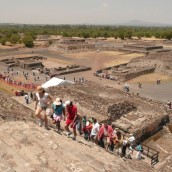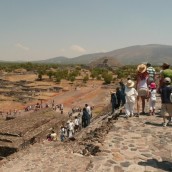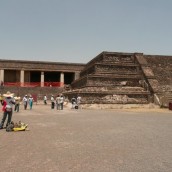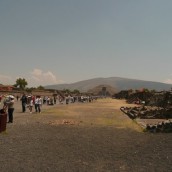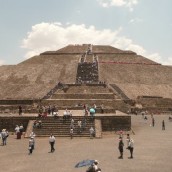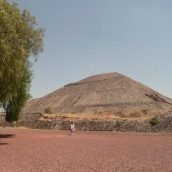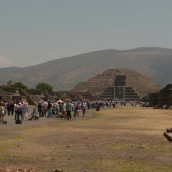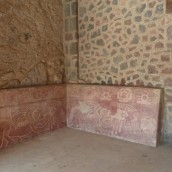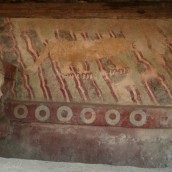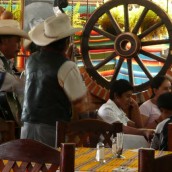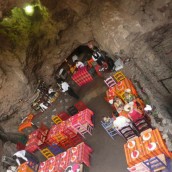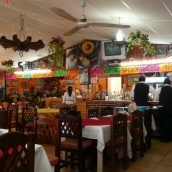Teotihuacan, birthplace of the gods, is one of the most spectacular archeological sites in Mexico.
The Pyramids of the Sun and Moon can be seen from afar, rising out of a high, arid plain in Central Mexico near Mexico City. The steep steps of the Pyramid of the Sun, whose square base measures almost 225 meters to a side and whose height climbs to some 63 meters, run perpendicular to the Street of the Dead, a wide avenue extending from the Pyramid of the Moon at its north end to beyond the Ciudadela and Temple of the Feathered Serpent near the southwest entrance to the site.
Teotihuacan is one of Mexico’s most visited archaeological sites, and with good reason. It is massively impressive in scale and complexity.The surrounding countryside brings the old legend of eagles and serpents and cacti vividly to life. Mexico’s history seems to seep through from those well-worn stones into your very fibers as you walk the avenue and climb the steep and jagged volcanic rock steps under the very same sun that the Teotihuacanos did so long ago.
Teotihuacan is conveniently close to Mexico City and can be visited as a day trip. Numerous tour companies can arrange transport and guided tours. Take a hat and something with which to shield yourself from the sun. It is intense at those altitudes.
Teotihuacan Archaeological Site
- Teotihuacan site
- From the Pyramid of the Sun
- Plaza of the Moon
- Down the Street of the Dead
- From the base of Pyramid of the Sun
- Pyramid of the Sun
- Street of the Dead, Pyramid of the Moon
- Frescoes, Teotihuacan
- Teotihuacan paintings
Thought to have been settled around 100 BC, Teotihuacan grew in population and prominence over the next couple of centuries. All major structures seem to have been completed by between 150 and 300 AD. It grew to be an important political and ceremonial center, powerful and prosperous over several more centuries. However, despite its size and influence, the city eventually fell into decline (possibly due to prolonged drought and climate change, the rise to power of other city-states, or, some think, civil unrest) and was finally abandoned around 650 AD.
The site received UNESCO World Heritage Site designation in 1987.
At its zenith, perhaps in the first half of the 1st millennium AD, Teotihuacan was the largest city in the pre-Columbian Americas, with a population of 125,000 or more, making it at minimum the sixth largest city in the world during its epoch.
Wikipedia contributors, “Teotihuacan,” Wikipedia, The Free Encyclopedia, http://en.wikipedia.org/w/index.php?title=Teotihuacan&oldid=610855530 (accessed June 2, 2014).
After Your Tour
And what to do once you’re hot and tired after your extensive tour in the hot sun? Refreshments at the Restaurante La Gruta or at one of the more rustic restaurants along the roadside that loops around the archeological site to the various entrances for some typical Central Mexican food: beans, rice, nopales (prickly pear cactus paddles), guacamole, handmade tortillas, salsas, and, for the carnivorous, a mixed barbecue of local meats.
“Pyramids of the Sun and Moon,” The Metropolitan Museum of Art, http://www.metmuseum.org/toah/hd/teot2/hd_teot2.htm
“Pre-Hispanic City of Teotihuacan,” UNESCO website, http://whc.unesco.org/en/list/414
Kelly Hearn, “Who Built the Great City of Teotihuacan?” National Geographic, http://science.nationalgeographic.com/science/archaeology/teotihuacan-/
Teotihuacan: Ancient City of Pyramids, http://www.livescience.com/22545-teotihuacan.html
Andrew Coe, Archaeological Mexico. A Traveler’s Guide to Ancient Cities and Sacred Sites, 2nd edition (CA, Avalon Travel, 2001)
